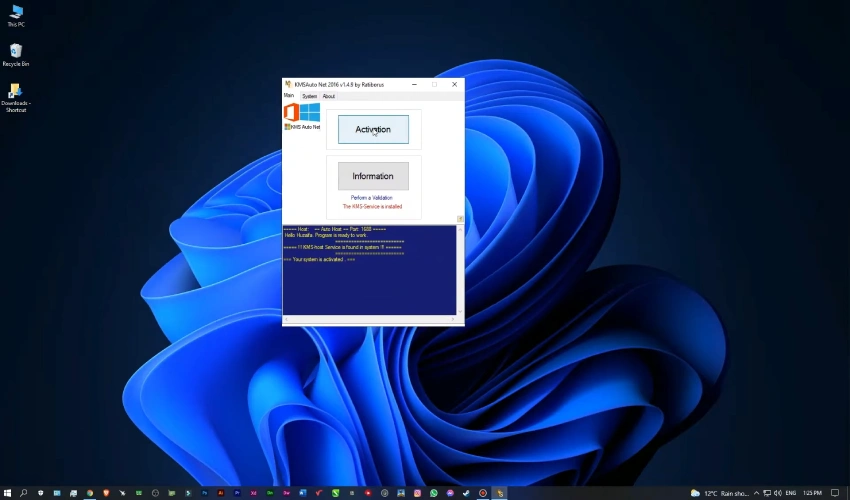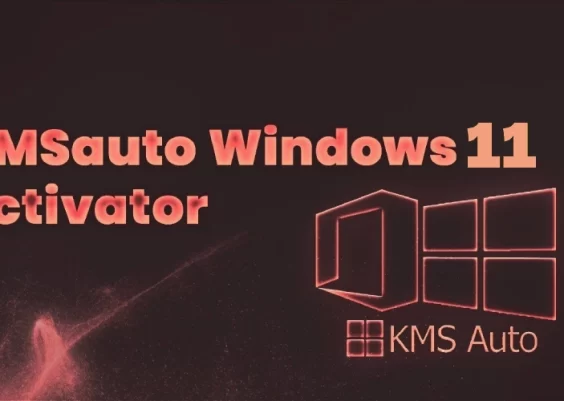KMSAuto activator uses a script to activate Windows and Office products, but sometimes users encounter an error message like “Error Loading Script C Windows Temp KMSAuto File.”
This issue can arise from several causes, including corrupted or missing script files, interference from antivirus software, and permission issues.
If your KMSAuto files are corrupted or flagged by your antivirus as a threat, you may find yourself unable to proceed with the activation process.
Additionally, lacking the necessary administrative privileges can prevent KMSAuto from executing its scripts properly.
We will discuss all the common causes in detail and provide you with effective solutions to help you resolve the “Error Loading Script” issue and successfully activate your Windows or Office products.
Reasons and Solutions for Error Loading Script C Windows Temp KMSAuto File

If you’re encountering an error loading the script at C:\Windows\Temp\KMSAuto, several factors could be at play. Let’s explore the potential reasons and their solutions to help you resolve the issue.
Corrupted or Missing Script Files
When using KMSAuto, encountering an error related to loading scripts from the C Windows Temp directory often points to corrupted or missing script files.
This issue typically arises when the specific files KMSAuto relies on, like .vbs scripts, either get deleted or become corrupted.
Without these critical scripts, the activation process can’t run smoothly, leading to the error message you’re seeing.
To resolve this problem, you can try reinstalling the KMSAuto net activator, which often restores the necessary files. If you prefer a more manual approach, consider downloading fresh copies of the script files from a trusted source.
After downloading, extract them to the correct directory where KMSAuto expects to find them and then attempt to run KMSAuto again.
Antivirus or Security Software Interference
Corrupted or missing script files aren’t the only culprits behind KMSAuto errors; antivirus or security software can also interfere with the activation process.
Antivirus programs are designed to protect your system, but they may mistakenly flag KMSAuto or its script files as threats because they bypass standard activation methods. This can lead to the errors you experience.
In order to resolve this, you can temporarily disable your antivirus software or create an exception for KMSAuto. The exact method varies by program.
For Windows Defender, go to Settings > Privacy & Security > Windows Security, click on Virus & Threat Protection, then Manage Settings, and toggle Real-time Protection off.
If you use third-party software, like Norton or Avast, check their settings to disable protection temporarily or create an exception for KMSAuto.
Creating an exception is often safer than disabling your antivirus. In Windows Defender, add exclusions in the Virus & Threat Protection menu.
For Norton, go to Settings > Antivirus > Exclusions, and for Avast, navigate to Menu > Settings > General > Exceptions.
After making these adjustments, restart your computer and try running the activation script again.
Permission Issues
Permission issues can often lead to the “Error Loading Script” message when using KMSAuto, especially if the tool lacks the necessary administrative rights.
If the KMSAuto activator isn’t running with proper privileges, it may fail to access critical system files or modify registry entries, causing this error. This problem is particularly common when the script is located in restricted directories like C:\Windows\Temp.
To fix these permission issues, start by running KMSAuto as an administrator. Simply right-click the KMSAuto executable file and select “Run as Administrator.” This action grants the tool the permissions needed to execute the script without restrictions.
If running KMSAuto as an administrator doesn’t resolve the issue, you might need to manually adjust the file permissions for the C:\Windows\Temp folder.
Right-click the folder, go to Properties, and then the Security tab. Here, you can modify the permissions to ensure KMSAuto can access the necessary files.
Incomplete or Incorrect KMSAuto Activation
Incomplete or incorrect activation of KMSAuto can lead to the inconvenient “Error Loading Script” message, particularly if the activation process was interrupted or the system failed to validate it properly.
This can happen when the tool doesn’t complete its tasks, leaving your system in limbo regarding activation status.
To fix this, first, make sure that you’re using the correct version of KMSAuto for your specific Windows or Office version. If you’re unsure, download a fresh, latest version of KMSAuto from a reliable source.
Next, try running the portable activator as an administrator by right-clicking on the executable and selecting “Run as Administrator.” This ensures that the tool has the necessary permissions to perform system-level changes.
File Location Problems
KMSAuto may also run into problems if its files are stored in a location that restricts access, like system-protected folders. Sometimes, the Temp folder, where KMSAuto often saves temporary files, mightn’t be accessible due to incorrect permissions or other file system issues. This can lead to errors when you try to load the script.
For a solution to this, check the location of your KMSAuto script. Verify it’s in a folder that you can easily access. If it’s currently in the Temp folder or another system folder, move it to a more accessible location, such as your desktop or a dedicated folder on your C: drive.
Additionally, be mindful of the file path. If the path to the KMSAuto script is too long, it might cause execution problems. Keeping the path short and straightforward can help avoid complications.
System Configuration Issues
Many users encounter system configuration issues that can hinder the proper loading of the KMSAuto script located in the C Windows Temp directory.
Misconfigured environment variables or faulty system files often cause these issues, preventing the script from being recognized or executed by your operating system.
To resolve these problems, start by running a system file check. This helps repair any corrupt system files that might be interfering. To do this, open the Command Prompt as an administrator and enter the command:
”’ sfc /scannow ”’
This process will scan your system for corrupted files and fix them as needed.
After that, check your system’s environment variables to verify they’re set up correctly. Pay particular attention to the PATH variable in the “System Properties” section. Make sure there are no missing or incorrectly set paths that could impede the execution of the KMSAuto script.
Resolve KMSAuto File Script Error and Activate Windows or Office Successfully
In conclusion, the “Error Loading Script C:\Windows\Temp\KMSAuto” issue can stem from various causes such as corrupted files, antivirus interference, permission problems, or incorrect activation.
By ensuring you have the correct version of KMSAuto, adjusting your system settings, and ensuring proper permissions, you can resolve the issue.
Always use trusted sources to download the activator and be mindful of your system configuration. With these steps, you should be able to activate Windows or Office successfully without further issues.
Keep your system optimized and ensure KMSAuto has the access it needs to perform its tasks.




